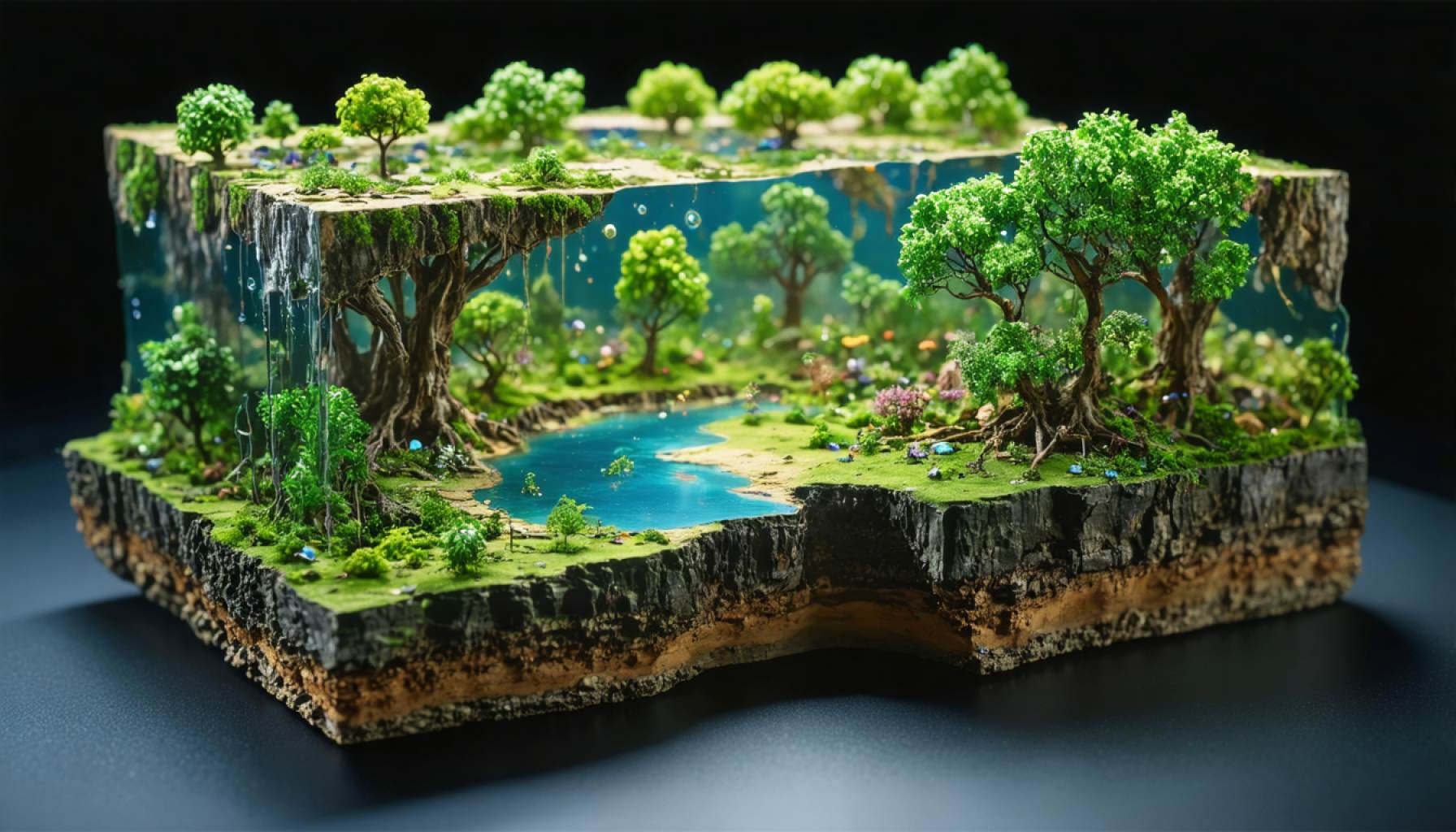The Hidden World Beneath: Unveiling the Mystery of Earth’s Underground Ecosystems

- The subterranean ecosystem is a complex, vast network that plays a crucial role in Earth’s resilience and adaptability.
- Mycorrhizal fungi form symbiotic relationships with plants, aiding in nutrient exchange and carbon sequestration, which is vital for climate stability.
- Bioluminescent fungi and other organisms in this realm offer potential for bio-luminescent innovations and new medicinal compounds.
- Unique creatures like the olm exemplify adaptation to extreme environments, expanding our understanding of evolution and survival.
- Technological advancements are allowing researchers to map these hidden caverns, enhancing our comprehension of Earth’s past climates and biodiversity.
- Protecting subterranean ecosystems is essential for preserving global biodiversity and securing the future of human existence.
Beneath our feet lies a vast, complex world teeming with life—a subterranean tapestry that remains a mystery to most. This hidden ecosystem, stretching over thousands of miles, hosts an array of life forms that defy the imagination and offer new insights into Earth’s resilience and adaptability.
Delve beneath the surface, where the roots of trees intertwine like dancers in the dark, creating one of nature’s most intricate networks. Here, mycorrhizal fungi thrive, symbiotically bonding with plants to exchange nutrients and communication signals. These fungi not only support plant growth but are crucial for carbon sequestration, aiding in stabilizing our planet’s climate—an essential service amid today’s environmental challenges.
Observe the glow of bioluminescent fungi, which light the cavernous landscape with a soft, eerie luminescence. These organisms have fascinated scientists for decades, and their mysterious allure hints at untapped potential, from bio-luminescent innovations to new medicinal compounds hiding in plain sight.
Within this underworld, creatures such as the elusive olm—an eerily pale, sightless amphibian—navigate through dark waters, relying solely on their acute sense of smell and hearing. These ghostly residents challenge our understanding of evolution, adaptation, and the limits of life, surviving in oxygen-poor environments where few can endure.
This subterranean realm is not just a scientific wonder; it is a vital component of Earth’s biodiversity. As technology advances, researchers are beginning to map these underworld caverns with unprecedented detail, uncovering life forms and geological structures that inform our understanding of past climates.
Peering into this hidden abyss, we find more than just a collection of unusual organisms; we uncover a world that interlocks with ours in ways we have just begun to understand. The delicate balance maintained beneath the surface rivals that of any terrestrial or aquatic ecosystem, underscoring the interconnectedness of all life on Earth—a poignant reminder of the world beneath and its silent power over the life above.
In the end, the lesson from beneath is clear: Protecting these ecosystems is not just about preserving nature but securing the future of our own existence. As we learn more about our planet’s underworld, we gain the knowledge to safeguard the biodiversity that sustains us all. Let us continue to dig deeper, both literally and figuratively, into understanding and preserving the natural world in its entirety.
Unveiling Earth’s Hidden Underground Ecosystem: Astonishing Discoveries and Future Prospects
The Intricate Web of Life Beneath Our Feet
Under the earth’s surface lies a fascinating subterranean world teeming with life, contributing significantly to Earth’s biodiversity. This underexplored ecosystem offers remarkable insights into resilience, adaptation, and survival strategies in extreme conditions. The interconnectedness and complexity of this underground world highlight the pressing need to protect and study it further.
Mycorrhizal Networks: The Underground Internet
Mycorrhizal fungi play a pivotal role in supporting plant growth by forming symbiotic relationships with roots, sharing nutrients, and facilitating communication. These fungi help sequester carbon, significantly impacting global climate stability. The concept of a “Wood Wide Web” emphasizes the extensive communication networks formed by these fungi, acting like the internet for plants.
Real-World Use Case: Research into these fungi has implications for sustainable agriculture, suggesting that enhancing mycorrhizal networks can lead to healthier crops and soil conservation.
Bioluminescent Wonders: Nature’s Unique Glow
Bioluminescent fungi light up the underground world, using chemical reactions to produce light without heat. Scientists are exploring their potential applications, such as eco-friendly light sources or novel medical therapies. This glowing phenomenon has inspired innovations in various fields, from art to biotechnology.
Market Forecast: Bioluminescence is expected to inspire new products in bio-engineered lighting, with a burgeoning interest in sustainable alternatives.
Olm and Other Unique Creatures: Masters of Adaptation
The olm, a sightless amphibian, exemplifies adaptation to challenging underground environments, thriving where oxygen levels are low. This remarkable ability to survive extreme conditions offers insights into evolutionary biology and the limits of life on Earth.
Controversy and Limitations: Researching such deep-dwelling creatures poses ethical challenges, as scientists must balance exploration with conservation to avoid disrupting these sensitive habitats.
Mapping and Understanding the Underground
Advanced technology now allows researchers to map subterranean ecosystems with unprecedented accuracy. This technological leap reveals ancient organisms and new geological structures, providing a clearer picture of past climates and informing future predictions.
Insights & Predictions: Understanding these ecosystems could help predict changes in climate patterns by analyzing trapped carbon and heat signatures.
Actionable Recommendations: How You Can Help
1. Support Conservation Efforts: Advocate for and support initiatives focused on underground biodiversity preservation.
2. Educate: Increase public awareness of the importance of subterranean ecosystems through community events and education programs.
3. Sustainable Practices: Implement sustainable landscaping practices that support underground biodiversity, such as minimizing soil disturbance and planting native vegetation.
Key Takeaways
The vast world below is a crucial component of Earth’s life-support system. As we continue to explore these subterranean networks, we uncover vital information that aids not only in conservation efforts but also in technological and medical advancements. Protecting this hidden realm ensures the preservation of biodiversity and the stability of climate systems that support life on Earth.
Related Resources
For more information on underground ecosystems, visit the National Geographic main page for comprehensive exploration and resources on Earth’s biodiversity: National Geographic.